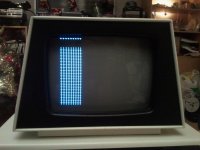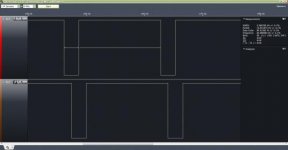... and also upon pressing enter when entering a line of program in BASIC.
Looks like this when running Fire!
https://www.youtube.com/watch?v=Ey8gmapT_3I
It's small horizontal lines in a diagonal kind of pattern, appears on every screen update in the clip as far as I can see, quite annoying.
Any tip on what to check or swap? All regulators seem to behave, didn't see any spikes with the oscilloscope.
Also a bit annoyed by the little bright spot that appears slightly to the right of the middle about 5-6s after PET is shut down, but I saw someone somewhere mention swapping some cap to solve that. Apart from a home made 013 ROM replacement and a broken 6550 I'm pretty much pleased with the current functionality. Need to straighten out the case in a few places, it seems to have gotten a lot of punishment - this is quite tough metal sheet.
Looks like this when running Fire!
https://www.youtube.com/watch?v=Ey8gmapT_3I
It's small horizontal lines in a diagonal kind of pattern, appears on every screen update in the clip as far as I can see, quite annoying.
Any tip on what to check or swap? All regulators seem to behave, didn't see any spikes with the oscilloscope.
Also a bit annoyed by the little bright spot that appears slightly to the right of the middle about 5-6s after PET is shut down, but I saw someone somewhere mention swapping some cap to solve that. Apart from a home made 013 ROM replacement and a broken 6550 I'm pretty much pleased with the current functionality. Need to straighten out the case in a few places, it seems to have gotten a lot of punishment - this is quite tough metal sheet.



